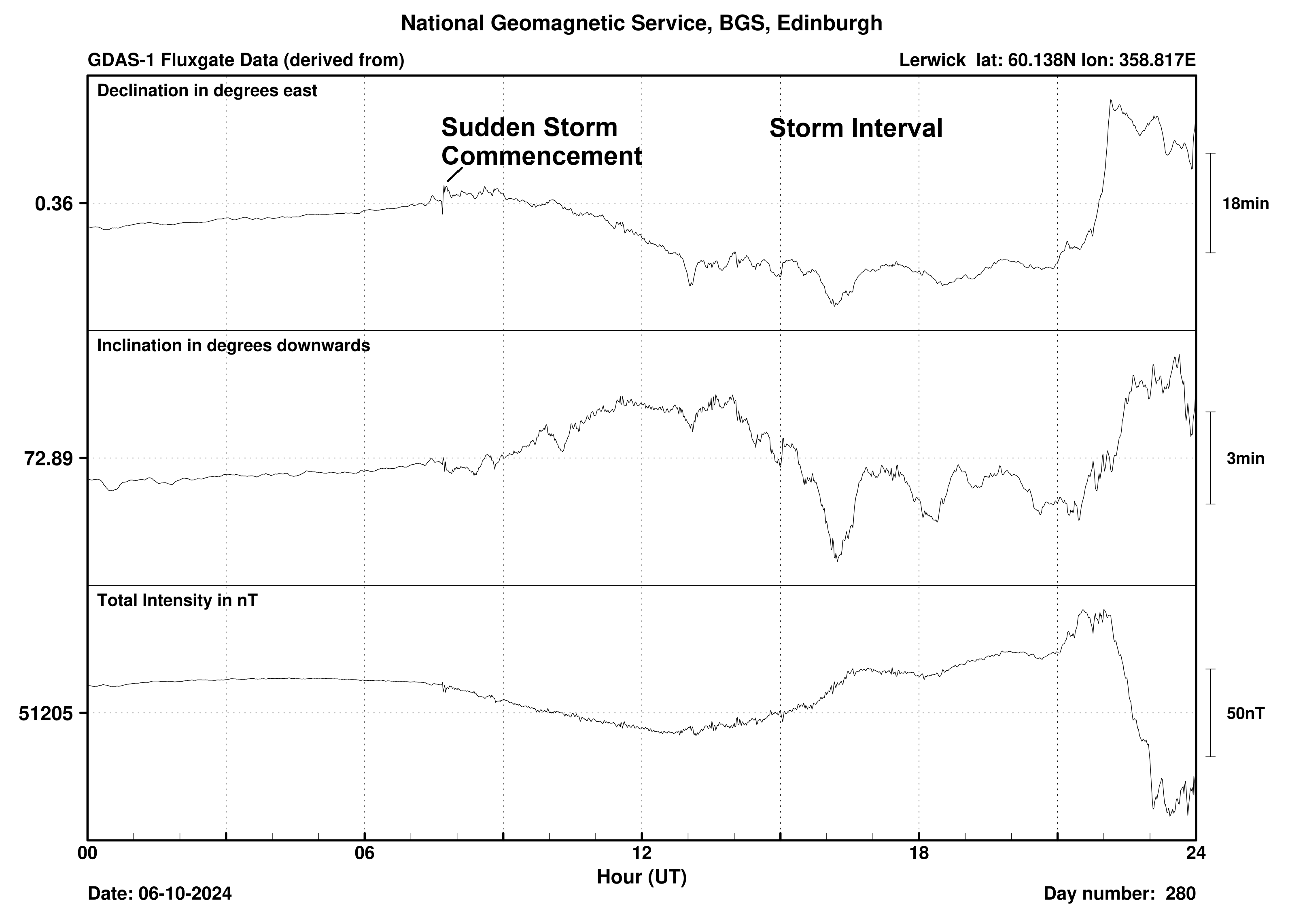Geomagnetic storm update - 7th October 2024
What Has Happened?
The coronal mass ejection (CME) that left the Sun on 1st October and was predicted to cause a geomagnetic storm arrived late on 4th but had very little impact on geomagnetic activity.
The full-halo CME that lifted from the Sunday on 3rd October, associated with an X9.0-class flare, arrived on the 6th. A sudden storm commencement was recorded in the magnetic field measurements at 07:40 UT. Later in the evening, geomagnetic activity increased to STORM G2 levels (on the NOAA Geomagnetic storm scales) in response. Residual effects from this event are continuing, but with a declining trend in intensity.
Further periods of STORM G1/G2 geomagnetic conditions are possible if we get some prolonged periods of negative Bz later this evening. Assuming clear dark skies, those in Scotland, northern England and Northern Ireland have the best chance if the weather is favourable.
Sign-up to receive Geomagnetic Disturbance Alert emails.
Follow us on X:
Follow @BGSauroraAlert for more occasional aurora alerts.
Follow @BGSspaceWeather for daily space weather forecasts.
Glossary
- BGS
- The British Geological Survey is a geoscience research centre that is part of UK Research and Innovation (UKRI) and affiliated to the Natural Environment Research Council (NERC).
- CME or Coronal Mass Ejection
- The eruption of a portion of the outer atmosphere of the Sun into space, caused by rapid changes in its magnetic field. Often occurs along with a solar flare.


